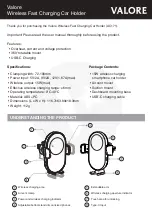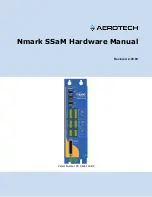
42
Metering
The NexStar has a fixed aperture and, as a result, fixed f/ratios. To properly expose your subjects photographically, you
need to set your shutter speed accordingly. Most 35mm SLR cameras offer through-the-lens metering which lets you
know if your picture is under or overexposed. Adjustments for proper exposures are made by changing the shutter
speed. Consult your camera manual for specific information on metering and changing shutter speeds.
Reducing Vibration
Releasing the shutter manually can cause vibrations, producing blurred photos. To reduce vibration when tripping the
shutter, use a cable release. A cable release keeps your hands clear of the camera and lens, thus eliminating the
possibility of introducing vibration. Mechanical shutter releases can be used, though air-type releases are best.
Blurry pictures can also result from shutter speeds that are too slow. To prevent this, use films that produce shutter
speeds greater than 1/250 of a second when hand-holding the lens. If the lens is mounted on a tripod, the exposure
length is virtually unlimited.
Another way to reduce vibration is with the Vibration Suppression Pads. These pads rest between the ground and tripod
feet. They reduce the vibration amplitude and vibration time.
C
C
C
C
C
C
C
C
C
C
C
C
C
C
C
C
D
D
D
D
D
D
D
D
IIII
IIII
m
m
m
m
m
m
m
m
a
a
a
a
a
a
a
a
g
g
g
g
g
g
g
g
iiii
iiii
n
n
n
n
n
n
n
n
g
g
g
g
g
g
g
g
Fastar Lens Assembly Option – Using your NEXSTAR GPS telescope at f/2 with optional Fastar Lens Assembly
The NexStar GPS telescope is equipped with a removable secondary mirror that allows you to convert your f/10
telescope into an f/2 imaging system capable of exposure times 25 times shorter than those needed with a f/10 system!
With the optional Fastar lens assembly you can easily convert your Fastar compatible telescope to f/2 prime focus use
in a matter of seconds. The NexStar's versatility allows it to be used in many different f-number configurations for
CCD imaging. It can be used at f/2 (with optional Fastar Lens Assembly), f/6.3 (with the optional Reducer/Corrector),
f/10, and f/20 (with the optional 2x Barlow) making it the most versatile imaging system available today. This makes
the system ideal for imaging deep-sky objects as well as planetary detail. Described below is the configuration of each
F-number and the type of object best suited to that kind of imaging.
Содержание NexStar 11
Страница 1: ...I IN NS ST TR RU UC CT TI IO ON N M MA AN NU UA AL L...
Страница 61: ...61 APPENDIX E MAPS OF TIME ZONES...
Страница 62: ...62...
Страница 63: ...63...
Страница 64: ...64...
Страница 65: ...65...
Страница 66: ...66...
Страница 67: ...67...
Страница 68: ...68...
















































